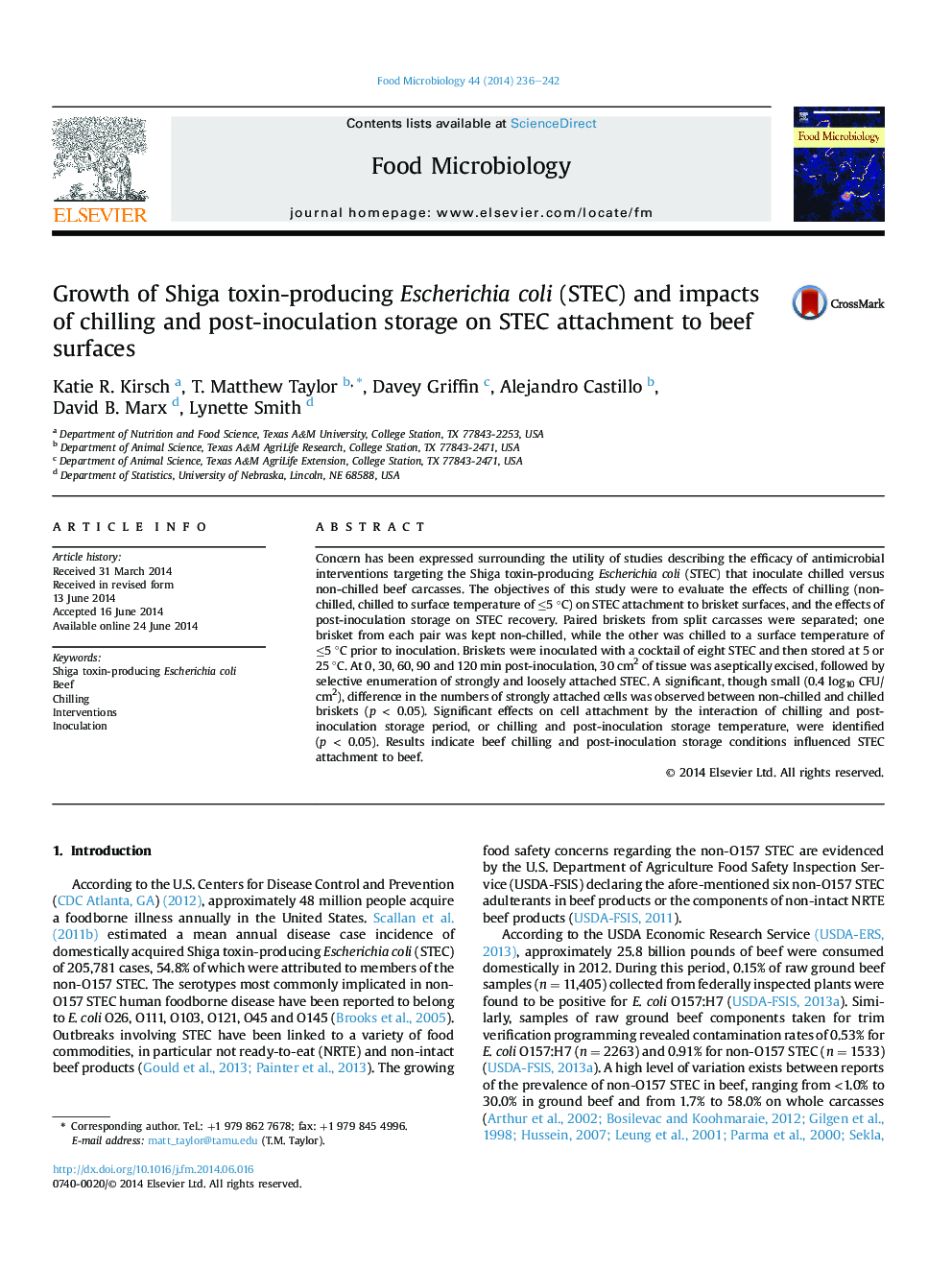| Article ID | Journal | Published Year | Pages | File Type |
|---|---|---|---|---|
| 6288686 | Food Microbiology | 2014 | 7 Pages |
Abstract
Concern has been expressed surrounding the utility of studies describing the efficacy of antimicrobial interventions targeting the Shiga toxin-producing Escherichia coli (STEC) that inoculate chilled versus non-chilled beef carcasses. The objectives of this study were to evaluate the effects of chilling (non-chilled, chilled to surface temperature of â¤5 °C) on STEC attachment to brisket surfaces, and the effects of post-inoculation storage on STEC recovery. Paired briskets from split carcasses were separated; one brisket from each pair was kept non-chilled, while the other was chilled to a surface temperature of â¤5 °C prior to inoculation. Briskets were inoculated with a cocktail of eight STEC and then stored at 5 or 25 °C. At 0, 30, 60, 90 and 120 min post-inoculation, 30 cm2 of tissue was aseptically excised, followed by selective enumeration of strongly and loosely attached STEC. A significant, though small (0.4 log10 CFU/cm2), difference in the numbers of strongly attached cells was observed between non-chilled and chilled briskets (p < 0.05). Significant effects on cell attachment by the interaction of chilling and post-inoculation storage period, or chilling and post-inoculation storage temperature, were identified (p < 0.05). Results indicate beef chilling and post-inoculation storage conditions influenced STEC attachment to beef.
Related Topics
Life Sciences
Agricultural and Biological Sciences
Food Science
Authors
Katie R. Kirsch, T. Matthew Taylor, Davey Griffin, Alejandro Castillo, David B. Marx, Lynette Smith,
